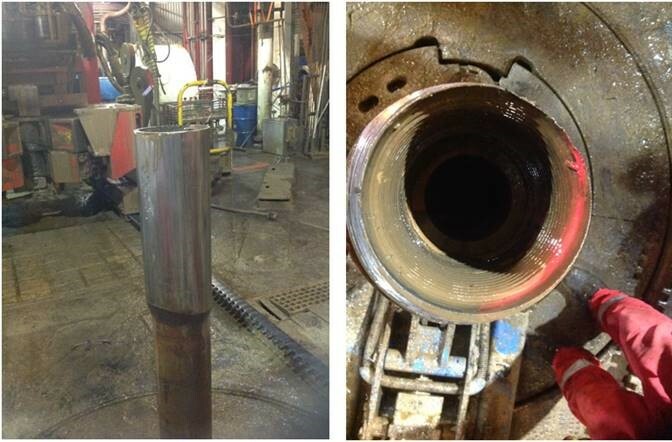6n Degrees of Freedom Transient Torque & Drag

Extensive asymmetric tool-joint wear. Courtesy of
When drilling vertical and deviated wells, it is quite common that heavy drill-string vibrations are the source of performance reductions or drilling incidents such as wellbore instabilities, damage to downhole tools or premature wear of drill-pipes.
In fact, there are many forms of drill-string vibrations: some are torsional, others are axial or even lateral. But in practice, all three vibration movements may happen simultaneously along the drill-string.
It is possible to model the combined effects of axial and torsional oscillations in real-time, but it is much more challenging to include the modelling of lateral displacements and yet be compatible with real-time constraints. This project will attempt at solving the full transient displacement of a drill-string, including the lateral movement, with new numerical methods that allow working with a coarser discretization of the drill-string and therefore opening for achieving real-time compatibility of the modelling.
Yet, drill-string vibrations are tightly linked to hydraulically induced forces as well as the grinding of drilled-cuttings during their transport.
In addition, it is suspected that heavy lateral vibrations may be the cause of wellbore instabilities. Therefore, the project will also investigate the impact of lateral shocks on possible borehole collapse. So, the problem is really a multi-disciplinary one involving mechanical, hydraulic, material transport and geomechanics aspects.
The availability of a real-time compatible vibration model should make it possible to develop methods to reduce unnecessary drill-string vibrations with the direct consequence of decreasing energy consumption during drilling operations, reducing the duration of drilling operations and possibly experiencing fewer drilling incidents
Project facts
Name
6n Degrees of Freedom Transient Torque & Drag
Status
CONCLUDED
Duration
01.06.20 - 31.12.23
Total budget
25.000.000 NOK